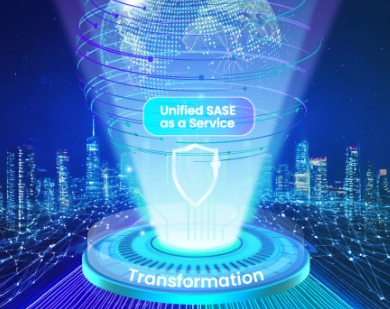In today’s rapidly evolving digital landscape, businesses must address the growing demand for secure and efficient networking. With the increasing reliance on cloud services and remote work, traditional network security approaches are no longer sufficient. Enter SASE (Secure Access Service Edge), an innovative solution that is reshaping how organizations approach network security. By integrating both security and networking functions into a single, unified framework, SASE is transforming the way businesses protect their data and operations.
What Is SASE?
SASE redefines traditional network security by combining security services with WAN capabilities in a cloud-based architecture. This modern approach is essential for organizations that depend on cloud platforms and distributed workforces. Gartner coined the term SASE to address the need for an integrated and simplified security model that could support the dynamic demands of today’s digital world.
Traditional security models often relied on fragmented, on-premises tools that created complexity and increased management burdens. SASE simplifies this by converging multiple services into one cloud-native platform. This makes network management more efficient and less complicated, while also enhancing the overall security posture of an organization.
Key Components of SASE
The strength of SASE lies in its ability to integrate several advanced technologies into a cohesive architecture. Some of the core components include:
- SD-WAN (Software-Defined Wide Area Networking): SD-WAN optimizes network performance by utilizing a variety of internet transport options, such as MPLS and broadband. It ensures seamless connectivity, especially for remote offices and branch locations, improving the efficiency of critical business applications.
- Zero Trust Network Access (ZTNA): The Zero Trust model is based on the principle of “never trust, always verify.” Unlike traditional models that assume trust within the network, ZTNA continually verifies the identity and context of all access requests to ensure secure application access regardless of location.
- Firewall as a Service (FWaaS): FWaaS offers cloud-based firewall protection that shields the network from external threats like malware and unauthorized access. It ensures consistent enforcement of security policies across all network endpoints.
- Secure Web Gateway (SWG): SWG protects users from web-based threats, such as phishing and malware, by filtering malicious web traffic and ensuring compliance with internet usage policies.
- Cloud Access Security Broker (CASB): CASB serves as an intermediary between users and cloud service providers, enforcing security policies to ensure safe cloud usage. It provides visibility and control over cloud data and applications, protecting sensitive information during its migration and usage across multiple platforms.
Benefits of SASE
SASE offers numerous advantages to businesses looking to enhance their network security infrastructure:
- Scalability: The cloud-native nature of SASE enables businesses to scale their security solutions effortlessly as their operations grow. Whether expanding to new locations or supporting more remote employees, SASE can adapt without requiring complex hardware setups.
- Cost Efficiency: By consolidating multiple security and networking services into a single platform, SASE eliminates the need for separate solutions, reducing expenses on hardware, software licenses, and maintenance.
- Simplified Management: Centralized management of security and network services through a unified platform reduces administrative overhead. IT teams can monitor security events, manage policies, and ensure compliance all from one dashboard, streamlining operations.
- Improved Performance: SASE’s intelligent routing and security integration optimize network performance by reducing latency and ensuring smooth application functionality, which leads to a better user experience for employees and customers.
- Enhanced Security: With its comprehensive security measures, SASE provides continuous protection against cyber threats. It monitors all network traffic, minimizing the risk of data breaches and other security incidents.
Real-World Applications of SASE
The applications of SASE are diverse and impactful across various industries. For example, in healthcare, SASE ensures the protection of sensitive patient data while enabling secure remote access for healthcare professionals. This is particularly important in ensuring compliance with regulations like HIPAA and facilitating telemedicine services.
The financial sector also benefits from SASE by securing direct-to-cloud connections and protecting sensitive financial data. SASE helps banks and financial institutions maintain strict security protocols, prevent unauthorized access, and protect the integrity of financial transactions.
Small and medium-sized businesses (SMBs) are also reaping the benefits of SASE. By adopting this framework, SMBs can gain access to robust security tools that were once only available to larger enterprises, helping them protect intellectual property, customer data, and operational processes without major capital investments.
The Future of Networking with SASE
As businesses continue to embrace cloud services and remote work models, the demand for scalable, robust, and secure networking solutions like SASE will only increase. Looking ahead, SASE will likely become the standard for secure networking, adapting to the evolving technological landscape and continuing to offer comprehensive protection against cyber threats.
Advancements in artificial intelligence (AI) and machine learning (ML) will further enhance SASE’s capabilities by enabling faster and smarter threat detection. These technologies will enable SASE to proactively identify and address security threats, ensuring businesses can operate efficiently while minimizing risks.
By adopting SASE, businesses will be better positioned to safeguard their digital assets, comply with regulations, and foster innovation in a secure and resilient environment. The future of secure networking is firmly tied to the continued evolution and widespread adoption of SASE, making it an essential component of modern cybersecurity strategies.


